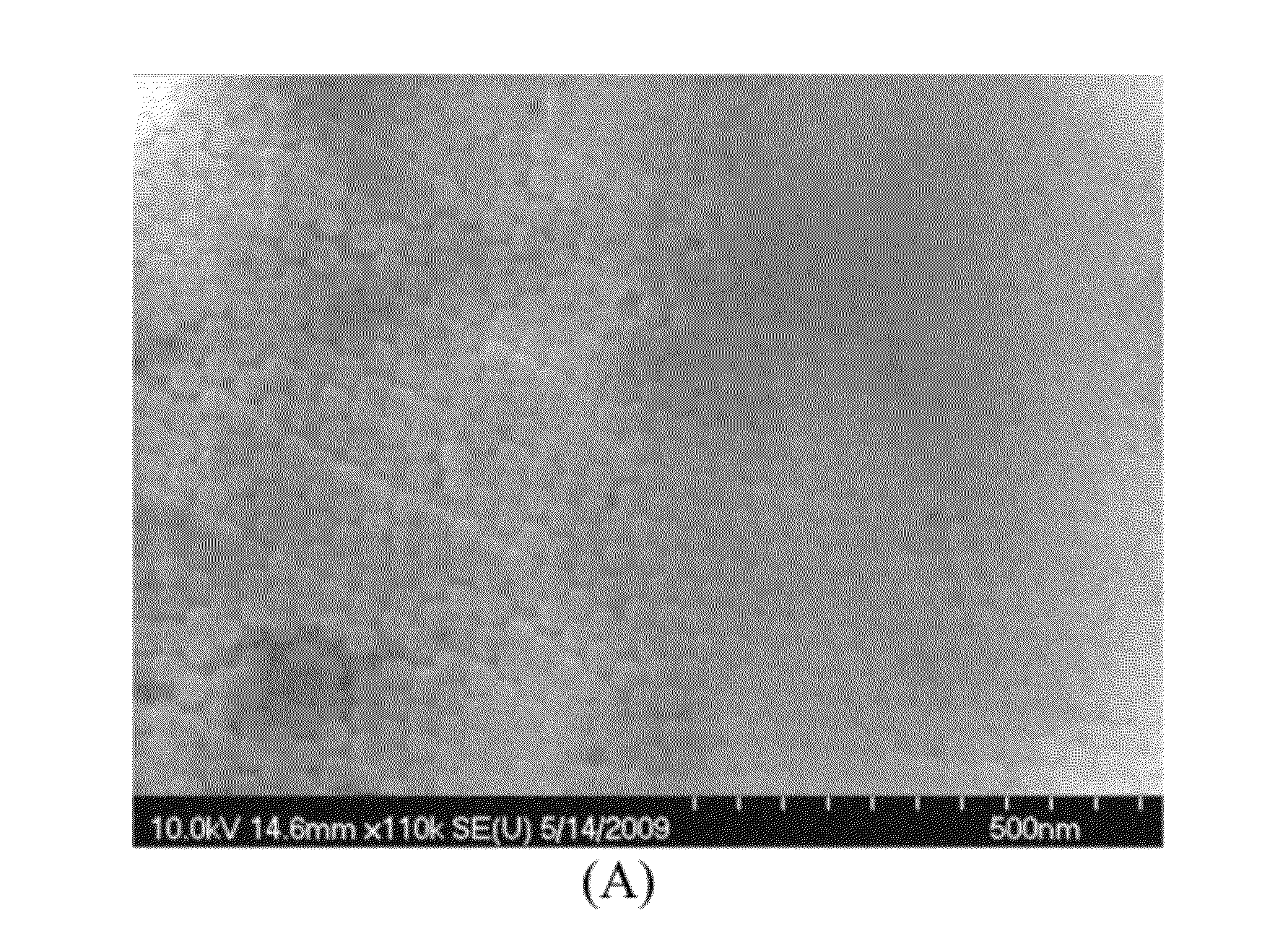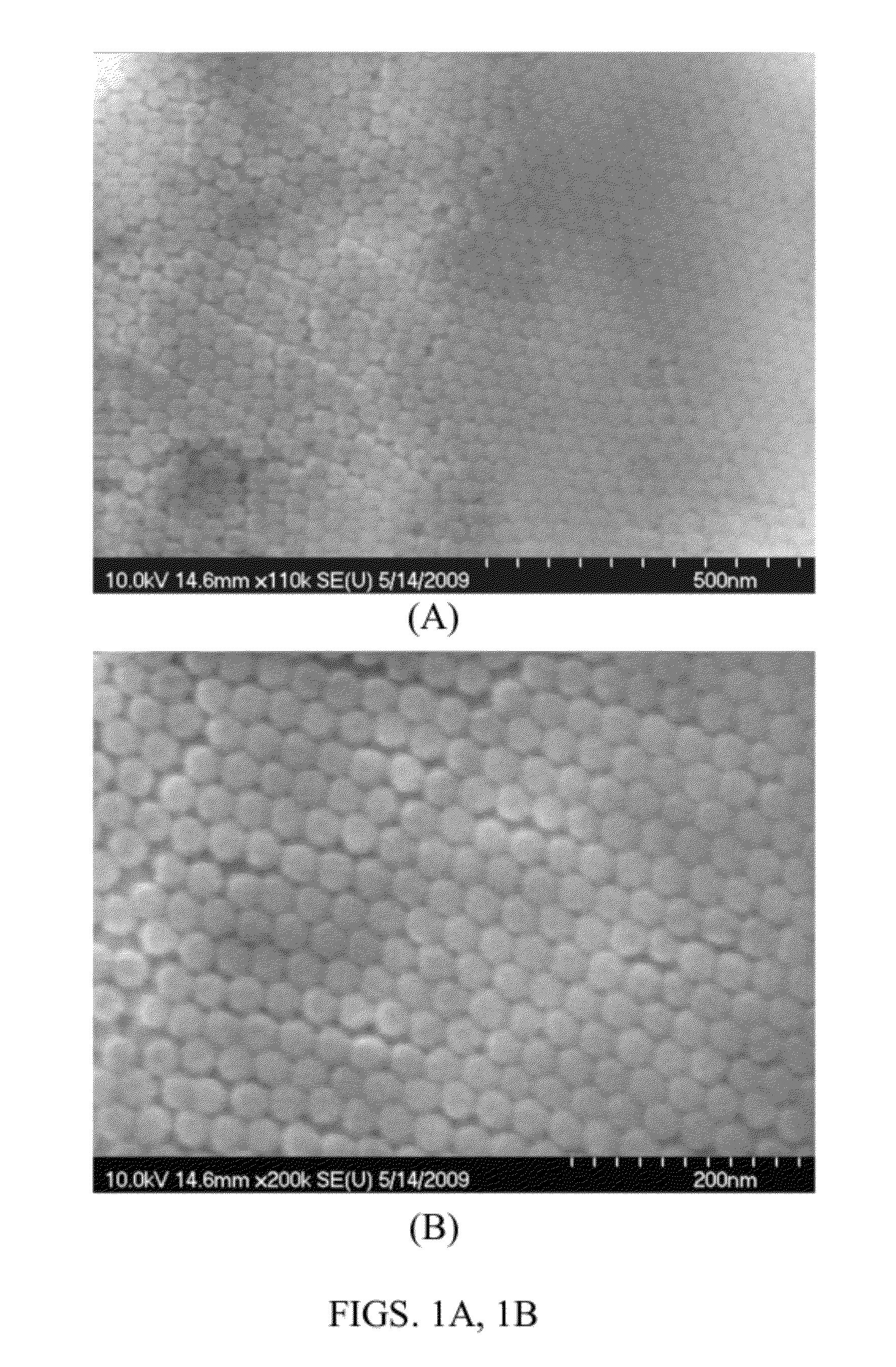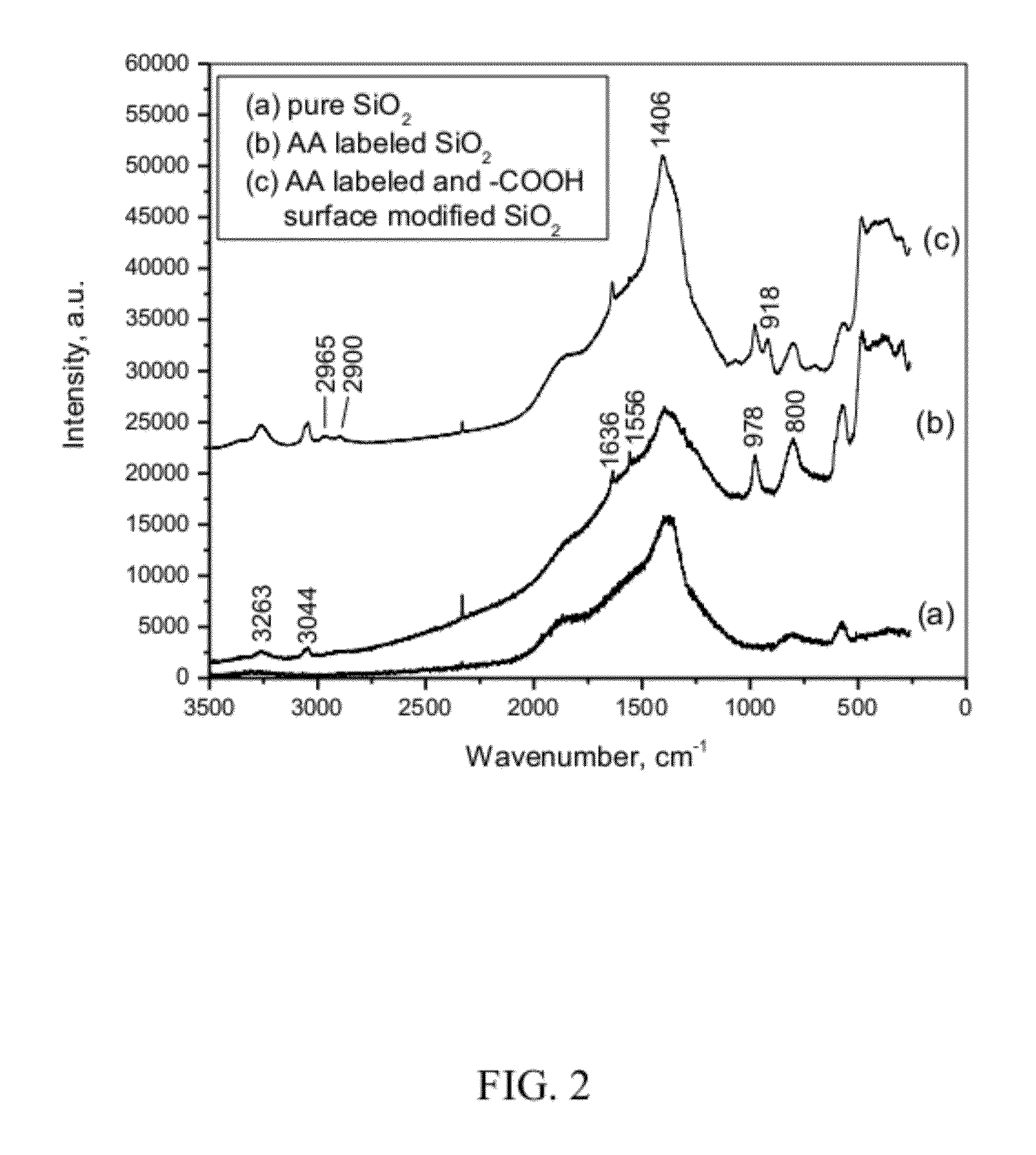Volume-labeled nanoparticles and methods of preparation
a nanoparticle and volume technology, applied in the field of nanoparticles and coreshell nanoparticles, can solve the problems of affecting the detection accuracy of nanoparticles, so as to improve the localized brightness of the system, resist the targeting to individual organelles, and hinder the effect of ph measuremen
- Summary
- Abstract
- Description
- Claims
- Application Information
AI Technical Summary
Benefits of technology
Problems solved by technology
Method used
Image
Examples
example 1
Preparation and Analysis of (Carbon-14)-Volume Labeled Silica Nanoparticles Prepared by 14C-Acrylic Acid Doping of a Vinyl-Functionalized Siloxane
[0068]As a general summary, isotope-labeled SiO2 nanoparticles were synthesized by co-hydrolyzing tetraethylorthosilicate (i.e., tetraethoxysilane, or TEOS) and an isotope-containing silane in microemulsion media. The isotope-containing silane was prepared by grafting the isotope into a silane precursor by a radical-induced polymerization reaction.
[0069]In a particular experiment, approximately 5 mg of C14-acrylic acid (C14-AA) containing 125 μCi C14 was first mixed with 0.2 g of trimethoxyallylsilane (TMOAS) as a microemulsion at neutral pH, and stirred for two hours. Then 0.2 mL of 0.5 M (NH4)2S2O8 was added to the microemulsion to initiate polymerization of TMOAS and C14-AA. After 30 minutes, 2 mL of 29% ammonia solution and 9.3 mL TEOS was added into the microemulsion and the reaction stirred for 12 hours. Then 1 mL of N-(trimethoxysil...
example 2
Preparation and Analysis of Fluorophore-Volume Labeled Silica Nanoparticles
[0073]2.5 mg of a succinimidyl ester derivative of Alexa Fluor® 430 was combined with 0.25 g 3-aminopropyltrimethoxysilane (APTES) in 10 mL of cyclohexane, and the solution stirred for 3-12 hours to produce the dye-siloxane intermediate. The reaction is depicted as follows (wherein R′ represents an Alexa Fluor® 430 moiety):
[0074]Although omitted in the above equation, it is understood that N-hydroxysuccinimide is a byproduct.
[0075]A microemulsion medium was composed of either (i) 25 g Igepal CO-520, 210 mL cyclohexane, and 3.3 g H2O or (ii) 27.5 g Igepal CO-720, 22 mL hexanol, 170 mL cyclohexane, and 10.7 g H2O. Then 2.5 mL or 3.0 mL of 29% NH3.H2O was added into the microemulsion (i) or (ii) under stirring, respectively. A mixture of 10 mL of the dye-siloxane intermediate in cyclohexane solution and 9.3 mL (8.7 g) TEOS was added into the microemulsion and stirred for 24 hours. The hydrolysis reaction is cata...
example 3
Surface Functionalization of Dye-Doped SiO2 Nanoparticles
[0087]For the volume-labeled SiO2 nanoparticles, a significant advantage is that surfaces of SiO2 nanoparticles remain available (free) for additional surface modification. Directed modification of nanoparticle surfaces is crucial for controlling interactions of particles with each other and their surrounding environment. This is of particular importance in interpreting the fate and impact of particles interacting with biological and environmental systems. For example, dye-labeled SiO2 nanoparticles have herein been modified with functional groups of —COO− (i.e., carboxylate, or —COOH at low pH), and —NH2 (or —NH3+ at low pH) by chemical grafting with silane agents, as generally depicted below:
≡Si—OH+(C2HSO)3Si—(CH2)2—NH2+H2O→≡Si—O—Si—(CH2)2—NH2+C2H5OH
≡Si—OH+(C2H5O)3Si—N(COONa)-(CH2)2—N(COONa)2+H2O→
≡Si—O—Si—N(COONa)-(CH2)2—N(COONa)2+C2H5OH
wherein “≡Si” represents a surface silicon atom connected by three separate bonds to othe...
PUM
 Login to View More
Login to View More Abstract
Description
Claims
Application Information
 Login to View More
Login to View More - R&D
- Intellectual Property
- Life Sciences
- Materials
- Tech Scout
- Unparalleled Data Quality
- Higher Quality Content
- 60% Fewer Hallucinations
Browse by: Latest US Patents, China's latest patents, Technical Efficacy Thesaurus, Application Domain, Technology Topic, Popular Technical Reports.
© 2025 PatSnap. All rights reserved.Legal|Privacy policy|Modern Slavery Act Transparency Statement|Sitemap|About US| Contact US: help@patsnap.com



